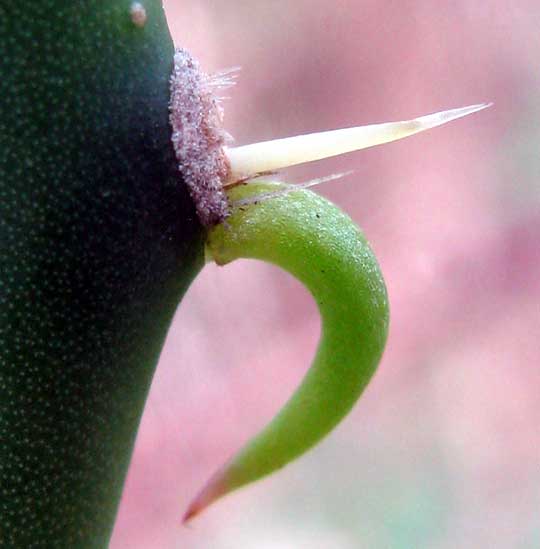Excerpts from Jim Conrad's
Naturalist Newsletter
from the March 7, 2010 Newsletter issued from Hacienda Chichen Resort beside Chichén Itzá Ruins, central Yucatán, MÉXICO; limestone bedrock, elevation ~39m (~128ft), ~N18.52°, ~W95.15°
CACTUS LEAVES & AREOLES
A pricklypear's beavertail-shaped pads are stem joints, not leaves. However, most cacti do have leaves, though usually they're tiny and soon fall off. A leaf on a pad rim of Opuntia inaperta can be seen below:

In that picture the down-curved, green thing, which is about ¼-inch long (7 mm), is the leaf. The white thing is a spine, and the several much smaller, almost transparent spines at the base of the single large, white spine are "glochids," If you've ever poked a cactus, succeeded in avoiding the spines, but ended up pulling almost-microscopic stickers from your finger anyway, those were the glochids. Usually glochids give cactus lovers more grief than spines.
Flowers, fruits, leaves, spines and glochids don't just erupt from any random part of a cactus's pads. Over the cactus's body there are specific small zones, called areoles, where those things arise. In the above photo you're looking at an areole from the side. From above it would be more or less circular.